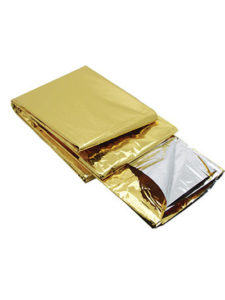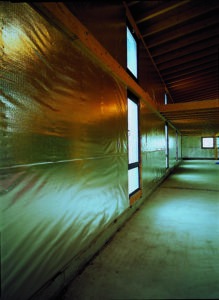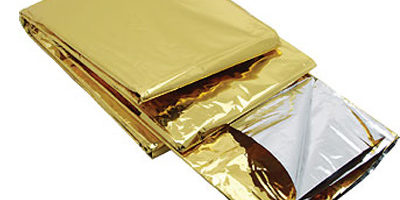Every object or earth body emits energy by radiation. We can take as an example (in a house): the walls, furniture, the residents, pets …
This energy is emitted in the form of very long infrared waves. This ability to emit by radiation is called emissivity. The more an object has high emissivity, the more heat escapes, especially at night and in winter. The value of emissivity is between 0 and 1, the maximum value corresponding to the maximum theoretical radiant energy for a given temperature.
The interest of aluminium?
When a plastic film is metallised it has an aluminium cover on one side (the metallised side). The emissivity of the aluminium metallised side of a plastic film is about 0.03 to 0.05 (which means it is very low). In spite of an excellent emissivity, it is necessary to protect this 20 to 30 nm metal layer by a varnish wich does not disturb this excellent emissivity value.
The best-known example of a low-emissivity film is the survival blanket : the metallised film is generally made with a metallised polyester film, the metallised layer is protected by a yellow lacquer (gold apperance with the metallised layer). While wrapping a human body with a survival blanker (in an accident for example) the body temperature will not drop because the metallised layer will re-tain the radiation of the body and thus avoid a loss of heat.

Interest of low-e films in building?
To avoid overheating inside a building in summer or a cold feeling in winter despite indoor heating, a thermal insulation mattress consisting of (among other things) of aluminum-metallized plastic films and protected by a varnish that does not intefere with the low emissivity of the aluminised layer, this film will make the building more comfortable in all seasons.
It is possible to combine two functions:
- Low emissivity.
- Water vapor permeability (breathable membrane)

Thermo-reflecting films or membranes
The installation of a thermo-reflecting membrane makes it possible to increase the energy efficiency by reflecting the radiant heat during the summer and by reducing convective heat losses during the winter, while allowing a good evaporation of the steam water. The membrane with a breathable metallic surface, can be used under a roof screen and will allow for a better thermal comfort of the building.
To conclude: a well-insulated building with a low-e membrane underneath and a water vapor permeable membrane will ensure excellent comfort for the inhabitants.
Pascal ROUSSET, R&D Manager

